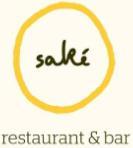 |
When everything is about sake…
|
Continue from the previous interview, Wayne is going to tell us more about his sake course in Chicago and his trip in Japan!
About Sake Course
— How was your Sake Professional Course in the United States?
It was amazing. Chicago is a great city, and I wish that I’d been able to stay longer. The sake scene there seems to be really vibrant, as is hospitality in general. There are great little restaurants and dive bars all over the place, and you don’t have to look hard to find some great Japanese food and sake to wash it down with.
— What did you do? What did you learn? Has your approach to sake changed since then?
I was only in town for a couple of days, and the jetlag really knocked me around so I wasn’t able to see all the sights I’d been recommended. I didn’t have time to make it to Wrigley Stadium to see a Cubs game, but I guess I’ll just have to go back some time soon.
From a sake point of view the course was very intense. I’m lucky that with my background I felt pretty comfortable, but it must have been really challenging for some if the people who were there starting from a blank slate. We covered in depth aspects of brewing from start to finish, and even though I’d heard a lot of it before, it was interesting to hear to from a slightly different perspective. John Gauntner has dedicated so much time and energy to furthering the cause of sake, and he really knows his stuff.
There were about 60 people in the room, and about 15 of them were there out of a personal interest only. I think it’s a good sign for sake as a category, when so many people took the time off work to come along and learn.
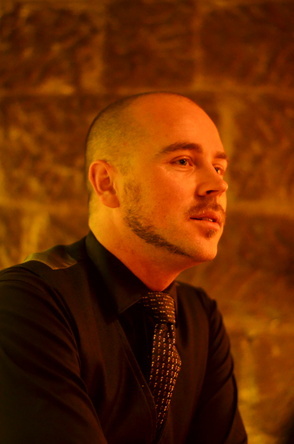
— Did you get inspired while in the United States?
I did. The people in Chicago are really approachable, and met lots of great people I hope to see again some time soon. What I noticed is that so many of the people in the bars and restaurants I visited were really proud of what they were doing, really passionate, and I would love to be able to bring some more of that feeling to Sydney.
Sometimes I feel Sydney takes its great restaurants and bars for granted, staff and patrons both, and seeing the economic issues in the States at the moment it helped me to appreciate how lucky I am to be based in Australia.
— What did you like the most of the course/ of your trip?
It was really good to see the level of interest in sake in Chicago, and seeing as people had flown from all over the country to attend the course, the level of interest in the States in general. Trends in the U.S. influence the rest of the planet, so hopefully we can see an increase in the popularity of sake globally. It will probably even help raise awareness in Japan.
I think many Japanese see other products as being exotic, whereas they are so accustomed to sake they don’t realise how amazing it is. Maybe the popularity in the States and the rest of the world will draw attention back to their local products, and protect the cultural treasure that are some of the smaller sake produces that might be struggling.
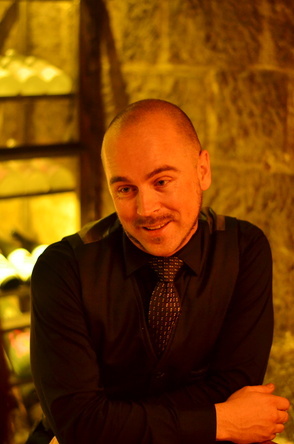
— Will you join John’s other sake courses in the future?
I’m already reserved for the Advanced Professional course in February. This one will be held in Japan, and I never really need an excuse to get back on a flight to Narita…
— Please briefly tell us something about John-sensei.
As I mentioned before, John has dedicated so much energy to raising the awareness of sake, telling the world and even some people in Japan about how great a beverage it is. It is probably not an exaggeration to credit him with much of the new-found respect sake has now outside of Japan.
Sake is a serious product that should be appreciated in its own right, and as a perfect compliment to food, but many people still associate it with shots and sake bombs. John has been instrumental in educating people subtleties and complexities on the subject of sake. He really knows his stuff, and I’m looking forward to seeing him again at the next course.
About Japan Tour
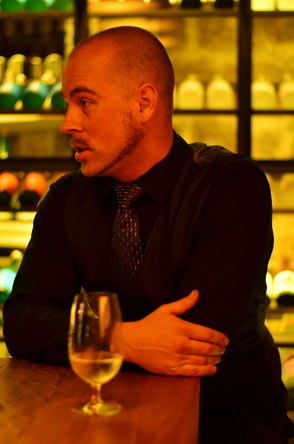
— Where did you go? How long was your trip?
I got myself an unlimited travel Japan Rail pass, so was able to bullet train all over the country as much as I wanted. There were some early starts, but I managed to visit Fukuoka, Kanazawa, Hiroshima, Fukuoka, Osaka, Iga, Nagoya, and Tokyo. I was in Japan for about 3 weeks, and it was a pretty hectic schedule.
— How was your trip?
What can I say? I love my job! I was able to visit some of the nicest people, who make some of the best product in the world. I was treated embarrassingly well, and everybody went out of their way to show me around. I love Japanese food and culture. It’s always a pleasure to visit. Everywhere you look there is an opportunity to try something new, to learn something new. I really love that about visiting Japan.
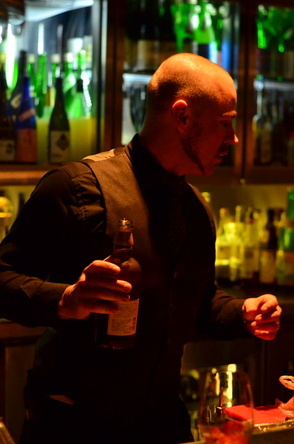
— What is the sake trend (or any other trend) like in Japan?
I was there in the middle of summer, and the temperature never dropped below 30, while the humidity was extreme. Perfect weather for namazake (unpasteurised sake). It seemed that everywhere I went I was offered a different style, and probably the most interesting of the new sakes I tasted were nama. It’s a very fashionable category of sake at the moment, and I’m hoping that we can start to see more in Australia some time soon.
— Which sake breweries did you visit?
I was lucky enough to visit Amabuki in Saga Prefecture, Kyushu, Mioya Brewery in Ishikawa Prefecture, and Kozaemon Brewery in Gifu Prefecture. I was also able to visit the Choya factory in Iga, which was fun!
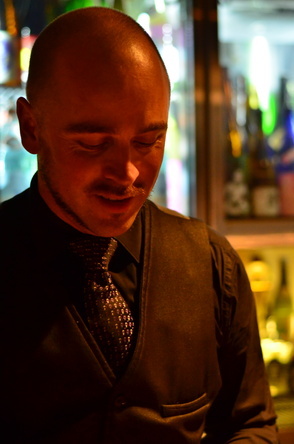
— What did you do/ see/ learn?
I have a greater appreciation of how harsh the life of a sake brewer is. In my head I thought there must be at least thirty people working at Kozaemon making the product, but in fact there are only three. And the hours are seriously long. Starting at 4am, a couple of hours break at midday, then finishing close to midnight, seven days a week for six months! How many applications can you imagine you’d get if you placed a job advert looking for staff with those conditions?!
It was also very interesting to hear the differing philosophies that each brewery holds, and their reasons for choosing the approaches that they use. I’ve been invited back to all the breweries in February to work for a few days in each, so that should help me better appreciate the passion and emotion that goes into making the drinks that I love so much.
— Which are some of your new favourites?
I was particularly impressed with a tokubetsu namazake from Amabuki that had a beautiful bouquet of cassis. It was absolutely awesome, while the Toubin Daiginjo from Kozaemon is still the nicest, most complex daiginjo I’ve yet experienced.
From Mioya the Yuho 50 was a standout. It’s a junmai ginjo that’s been aged for 2 years in the bottle, which gives it a spectacular depth of caramel and pepper. Fujita-san is a great fan of Sherry, and she is deliberately trying to develop Sherry characteristics in her sakes to match with food. Unfortunately of the above only the Yuho 50 is currently available in Australia, but I’m working to get that changed as soon as possible!
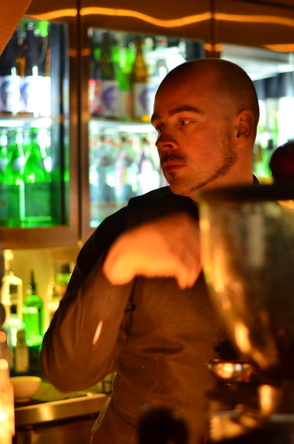
— Do you have new cocktail ideas?
I’ve been playing around with Yakult since I’ve been back in Australia. A little bit of yuzukosho and some fresh pineapple. Very happy with the result, but I’ll hold of for the weather to warm up before I bring that one out.
As far as cocktails with sake, I tend to believe most are best consumed the way that the brewer intended. With that said, the robust sakes, aged in particular, can be used as long as they are allowed to maintain their character. I’m going to play with some of Mioya Yuho junmais, so maybe watch this space…
— Any general advice on sake tours?
Get out there are do it, but if you want to get the most out of it try and brush up on your Japanese, or at least take a Japanese speaking friend. Buy a Japan Rail pass before you leave Australia. They allow unlimited travel on JR trains, but you can’t buy them in Japan so plan ahead. If you can manage to get in touch with a few breweries before you leave then make sure that you give them time to for you. Even in the down months sake brewers are still working hard schedules.
Also, give yourself enough time. Even on the bullet train it you can find yourself cramped for space. I managed to catch my last Shinkansen with thirty seconds to spare, after travelling to the station on a ninety-minute trip. Talk about cutting it fine!
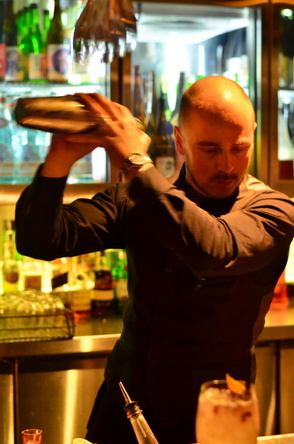
~~~~~~~~~~~~~~~~~~~~~~~~~~~~~
 |
Wayne Shennen According to Wayne Shennen, good bartending is all about balancing flavours. “The subtlety of each ingredient should shine through,” explains the passionate New Zealander, a trained sake sommelier and one of Sydney’s most respected bartenders at award-winning Saké Restaurant & Bar. “If you can taste what you’re drinking, you tend to treat alcohol with more respect.”a |

Saké Restaurant & Bar
Hamer Hall, Arts Centre Melbourne, 100 St Kilda Rd, Melbourne VIC 3004.
Tel: +61 (3) 8687 0775
www.sakerestaurant.com.au/melbourne
Lunch
Mon – Sun 12.00 – 3.00pm
Dinner
Mon – Thurs 6.00 – 10.30pm
Fri 6.00 – 12.00am
Sat 5.30 – 11.30pm
Sun 5.00 – 10.00pm
Related articles:
The Sake Alchemist #4
The Sake Alchemist #3
The Sake Alchemist #2
The Sake Alchemist #1
An interview with Wayne Shennen
Tasting Business at Saké Restaurant & Bar




